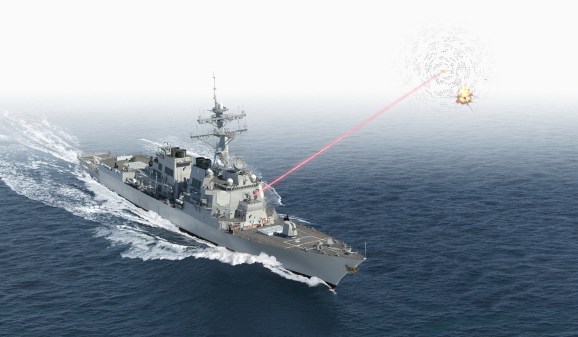US to give Israel $1.2B for Iron Beam laser weapon

A bill signed into law by President Joe Biden on Wednesday includes funding for Israel to procure a directed energy system called Iron Beam.
The Israel Security Supplemental Appropriations Act of 2024 includes a total of $26.4 billion “to support Israel in its effort to defend itself against Iran and its proxies and to reimburse U.S. military operations in response to recent attacks,” according to a summary of the legislation provided by Republicans on the House Appropriations Committee.
Of that amount, $1.2 billion is for the secretary of defense to provide to the Israeli government for the procurement of Iron Beam, to be transferred pursuant to an exchange of letters, according to the text of the bill.
Following Hamas’ Oct. 7, 2023 attack on Israel, the White House requested $14.3 billion from Congress for a security assistance package. Of that, $1.2 billion was to go toward research, development, test and evaluation of Iron Beam, according to a letter to Congress from the Office of Management and Budget.
Notably, the funding provided by lawmakers in the supplemental that Biden signed this week would put $1.2 billion toward procurement of the system for Israel — not RDT&E. That money would come from the Pentagon’s Defensewide accounts.
The 100-kilowatt high-energy laser is designed to defeat a variety of threats, including unmanned aerial vehicles (UAVs), and engage targets “a few hundred meters to up to several kilometers” away, according to Israeli defense contractor Rafael, which has been working on the weapon.
“Increasingly sophisticated airborne threats — including mortars, rockets, and UAVs as well as swarms of mini-UAVs — are being faced by both military forces and population centers. Since current Kinetic interceptor systems are expensive and not always sufficient to counter some of these threats, powerful new solutions are required that meet the needs of this new reality,” the company said on its website.
The weapon was successfully tested in 2022, according to officials.
The system is expected to be fielded by the Israeli military by the end of 2025, a Rafael executive told Breaking Defense last month.
The $1.2 billion appropriated by the U.S. Congress for Iron Beam will remain available until Sept. 30, 2026.
Directed energy weapons are seen as advantageous for air-and-missile defense because they are relatively inexpensive per shot compared to traditional interceptors and they possess nearly unlimited magazines. The U.S. military is pursuing a variety of lasers and high-power microwaves to defeat drones and other threats.
Doug Bush, the U.S. Army’s acquisition chief, suggested last fall that the Pentagon may look to procure Iron Beam in the future.
“I was pleased to see that [Iron Beam] investment” in the original supplemental request that the White House put forward, he told DefenseScoop during a roundtable with reporters at the Pentagon in November. “I’d seen the system when I last went to Israel, I saw the first prototype,”
He noted that the U.S. military has directed energy systems in the works, including the Indirect Fire Protection Capability-High Energy Laser (IFPC-HEL) prototype program, which is being overseen by the Army’s Rapid Capabilities and Critical Technologies Office.
“The Israeli system is a slightly different approach technologically. So actually, it’s a nice complement because we’re kind of going down one path, they’ve gone down a slightly different one. So I think yes, there’s potential if theirs works well, it could be something we could think about leveraging for our needs in that space. So that’s really a benefit of that funding is … we can explore multiple paths here and see what works,” Bush said.
The U.S. Navy is also interested in the potential for directed energy weapons to boost the department’s defensive capabilities.
Secretary of the Navy Carlos Del Toro told reporters earlier this year that he’s looking to increase investments in DE in future budget submissions.
Vice Adm. Brendan McLane, commander of U.S. Naval Surface Forces, has expressed frustration that the sea service hasn’t been able to deploy more directed energy systems onboard ships that could defeat unmanned aerial systems (UAS) and other threats.
“I think there’s definitely an emphasis and a real emphasis on counter-UAS. The Army has led that for a long time. The Navy is focused on it from both a shore perspective and a ship perspective. And we need to do more work there because we are at the wrong end of the cost curve,” Adm. James Kilby, vice chief of naval operations, said Wednesday during a panel at the Global Security Forum hosted by the Center for Strategic and International Studies. “Let’s go reflect on this and figure out a better way to do this, maybe through some directed energy, electronic warfare, high-powered microwave things in the future. And I think we’re looking at that.”
Rafael has been developing a naval variant of Iron Beam. It showcased the system at last year’s International Maritime Defense Exhibition in Singapore.
The weapon is designed to “quickly and effectively engage and neutralize a variety of threats, including short-range ballistic rockets, drones and UAVs of various sizes,” the company said in a release before the event.






